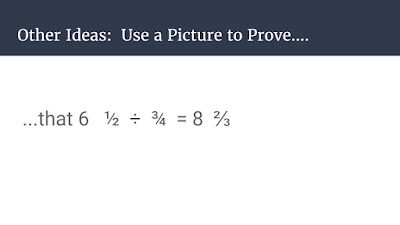1. Games--Games are such a great way to get students engaged, but also a great way to give feedback, especially when answers are wrong. There are so many fun games to play. One simple game I played last week I called, "Get 5". I decided to do this in the middle of class when my planned lesson was NOT going as planned. Anyway, it was pretty simple. I challenged my class to get 5 questions in a a row correct. I put a problem on the board and gave everyone a chance to work with their partners to answer the question. Then I rolled a 30-sided die to randomly call on a student to give me the answer as well as how they got it. If the class could get 5 in a row correct, I gave them a stamp for our school-wide PBIS program. It worked great....lots of conversations, and students knew that everyone at their table needed to understand. Kids were giving each other feedback, and I could give feedback based on conversations I heard or answers given.
2. Partner activities--I love to do self-checking partner activities, and it allows students to give each other feedback. Since students are checking each other's work, it frees me up to listen to student conversations and intervene as needed (or to have small group instruction). They are fairly easy to create....the idea is that you assign each student to either be partner A or partner B. Each student has a different set of problems. I usually like to have about 6-8 problems, depending on what the topic is. The key is that although the students have different problems, the answers are the same. For example, student A might have the problem -13 + 8 and student B might have the problem -4 + -1. Each student gets practice, and students know if they don't get the same answer that they need to check over their work. I like to take my partner activities to the next level by creating a "second part" for each activity. So after the partners have completed the problems and agree on the answers, then they have to use their answers together to complete another task. For example, I might have the students from above show each of their problems on a number line, or create a story problem to represent each problem. This is a great way to handle students working at a different pace, or just to extend the learning opportunities for the partner activity. I have several sets of partner activities available in my store if you're interested.
- Proportional Relationships and Unit Rate Partner Activities
- Integer and Rational Numbers Partner Activities
- Measures of Central Tendency and Variability Partner Activities
Then with each problem, I could call out different answers, and tell them which feedback was appropriate for each answer.
4. Use technology to give feedback--Technology truly can help us understand what everyone in our class is thinking, and give productive feedback to them. One technology tool that I love (and so do my kids!) is Kahoot. Kahoot keeps my students engaged, and I get all kinds of information about how many in my class understand. Additionally, if you plan the incorrect answers carefully, you can sometimes customize your feedback to students, such as "If you picked green, you might have forgotten to line up your decimals. If you picked red, you may have forgotten to carry."
Another tool that I love to use to give feedback to my students is the website quia. I LOVE using this to give short, formative assessments to my students. My absolute favorite thing about quia is that you can customize the feedback that students get for correct or incorrect answers. In addition, you can change the settings so that students get feedback after each answer, instead of having to wait until the end. I love this feature! I know in Google Forms, you can give students feedback, but I don't think they get the feedback until they are done. I much prefer to have them get the feedback as they work, so they can be learning as they go. Quia does have a subscription cost of $49 per year, but for me it's worth every penny.








